|
Bill Brendling's Z80 Systems
Two of the Z80 based systems that Bill designed and built himself :
|
Home Made Computer |
|
The component parts of Bill's Z80 Home Made Computer design.
|
 |
The PDF
contains a copy of Bill's schematics for the design |
Commenting on the photo, Bill notes "the photo shows the
somewhat sad remains of my previous attempt at a home made
Z80 computer 20+ years ago. What got built did work, but I
never got around to doing much firmware for it, I then got
too ambitious. I wanted to add a bitmapped graphics display
with glitch free updating. But however many designs I
considered, with the components available to me at the time
I invariably ran out of nanoseconds in propagation delay. " |
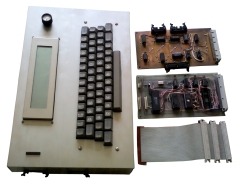 |
| The keyboard is mounted in an aluminium box which also
houses a text only LCD display having 4 lines of 40
characters. The keyboard is a matrix keyboard of similar
design to the Memotech MTX keyboard. There is almost no
circuitry inside the keyboard unit, the majority of the
electronics were external - see below. |
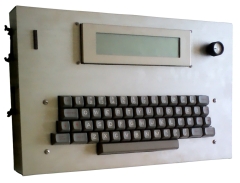 |
|
The main PCB, containing the CPU, ROM, RAM, clock
crystal and supporting components.
|
Clock Speed
MHz |
RAM
KB |
ROM
KB |
|
4 |
32 |
16 |
|
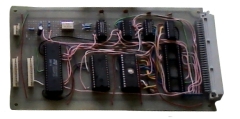 |
| I/O board This contains the interfaces for the LCD
display and matrix keyboard |
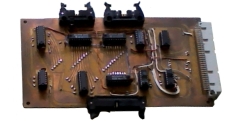 |
| Bill's system bus The PCBs are fitted with DIN 41612
connectors with mating connectors fitted to a short length
of ribbon cable as shown. |
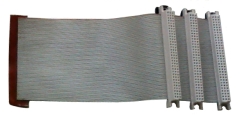 |
|
NAVTEX
Decoder |
|
Quoting from
Wikipeda,
"NAVTEX (Navigational Telex) is a service for delivery of
navigational and meteorological warnings and forecasts, as
well as urgent marine safety information to ships".
Bill's NAVTEX is
a minimal Z80 based microcontroller.
|
Clock Speed
MHz |
RAM
KB |
ROM
KB |
|
3.2768 |
48 |
16 |
The system was fully completed and still operational
|
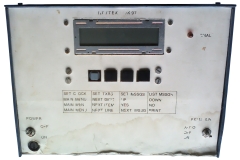 |
|
There are three stacked PCBs, held together by threaded
studding. The top PCB has the Z80, two static RAM chips,
EPROM, and memory decode logic.
The short length of ribbon
cable, with three plugs, running down the left hand side of
the boards connects them in a similar way as Bill's HBC.
You can also see the LCD on the front panel (top of
photo) and four buttons for user input.
|
 |
The PDF
contains a copy of Bill's schematics for the
processor design, as well as the RF circuits
(which are included for general interest, even
though they are not applicable to Z80 computers). |
|
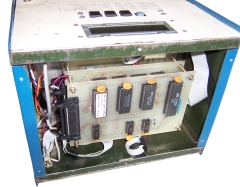 |
| Describing his Memotech MTX's contribution to the
system, Bills notes: "A base view showing the dicast box
containing the radio frequency stuff, and the power
smoothing and regulation circuits.
My Memotech played an important role in the development
of this unit. By far the most difficult aspect of the
development was the radio frequency part. During much of the
work, the outputs from the tone detector were coupled to
inputs on the Memotech printer port, and then the Memotech
ran the program to decode the signals." |
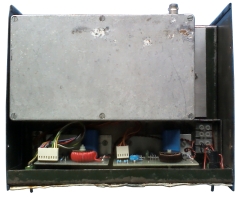 |
Credits : Photos by Bill Brendling
|